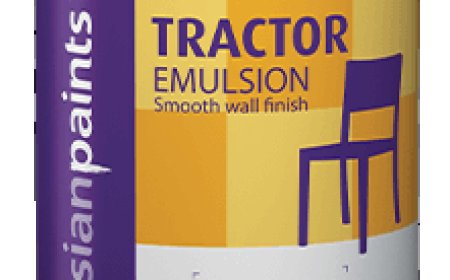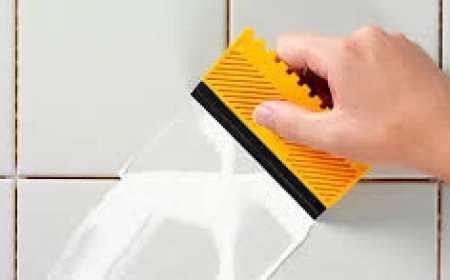Interior House Painting Process | Step-by-Step Guide
Discover the ultimate step-by-step guide to interior house painting, providing a faultless finish for any home improvement project. From preparation to finishing touches, discover expert tips and techniques for a professional-quality paint job. Ideal for DIY enthusiasts and those wishing to renovate their spaces.

Interior House Painting Process | Step-by-Step Guide
Introduction
Interior house painting is about changing your home's overall environment, not just painting the walls a different color. The value of inside house painting cannot be highlighted, from creating a welcoming atmosphere to increasing property value. Freshly painted walls not only bring new vitality to a room, but they also protect surfaces from wear and strain, making them simpler to clean and maintain. Furthermore, color selection affects mood and productivity, therefore it's critical to think about how paint choices will affect people psychologically. Investing in interior house painting can significantly improve both looks and functionality, whether you're wanting to update your living area or get your house ready for sale.
A step-by-step guide can be likened to a helpful mentor who offers clear instructions and guidance at every stage of the process, making it an ideal companion for beginners. It simplifies difficult activities into simple steps that are simpler to understand and follow. Step-by-step instructions allow beginners to study at their own pace and build confidence as they move from one step to the next. It removes doubt and uncertainty, providing a clear path to success. A well-structured guide guarantees that beginners have all the knowledge they need to set out on their journey with confidence and passion, from understanding fundamental principles to mastering advanced skills.
For long-lasting effects and a professional finish, selecting the appropriate paint and equipment for your house painting project is essential. Good paint gives your walls a more polished look and offers superior durability and coverage. Similar to this, painting can go more smoothly and effectively if the right supplies are used, like rollers, tape, and brushes. Purchasing high-quality paint and tools may appear like an additional investment, but they save money over time by lowering the need for touch-ups and guaranteeing that your paint job will last.
Preparation Phase
Assessing the Space
It's critical to analyze the space's size and layout before beginning any interior painting projects. It is easier to estimate the amount of paint required and organize the painting process effectively when its size and structure are understood. Greater paint and equipment may be needed in larger rooms, while smaller areas may require careful color selection to avoid overpowering the space. Evaluating the layout also aids in choosing the optimal painting strategy, such as painting one wall at a time or beginning in a corner and working your way across. You may make painting easier and get the results you want more easily by taking the time to evaluate the size and pattern in advance.
Before beginning your interior house painting work, you must determine which places require more care or restrictions. Keep an eye out for items like fixtures, furniture, and architectural features that might need to be moved carefully or protected when painting. Also, check the walls for any flaws or damage that should be repaired before painting, such as cracks or holes. By keeping an eye out for these challenges and locations that require extra care, painting projects may be organized and carried out more efficiently, producing faultless results and reducing downtime.
Gathering Supplies
Identifying any barriers or locations that require extra attention is critical before beginning your interior house painting project. During painting, keep an eye out for items like fixtures, furniture, and architectural details that might need to be moved carefully or covered. Inspect the walls for any faults or damage that has to be repaired before painting, such as cracks or holes. Maintaining a smooth painting process, guaranteeing a perfect finish, and reducing any issues can be achieved by keeping a record of these challenges and locations that require extra care.
Cleaning and Clearing
Before you begin painting, clean your walls, furniture, and floors to guarantee a smooth surface. To start, dust or vacuum surfaces to get rid of any loose dirt or dirt. Use a moderate detergent solution and a soft sponge or cloth to gently remove any stains or grease from the walls. For furniture that has wooden surfaces, think about applying a wood cleaner after wiping it down with a moist cloth to get rid of dust and grime. To ensure a clean painting environment, sweep and wash the floors in the last step. If you want the greatest effects, let everything totally dry before painting. Your paint will adhere more readily and give an improved look on clean surfaces.
When preparing for a painting project, it is critical to remove impediments and protect surfaces to minimize accidents and achieve a clean finish. To avoid paint particles, start by rearranging furniture or covering it with drop cloths. To protect fixtures from paint drips, remove covers and switch plates. To keep paint off of reduce, windows, and door frames, use painter's tape to draw an outline around such surfaces. To catch spills, cover floors with drop cloths or plastic sheeting. These safety measures guarantee a flawless painting process from beginning to end by reducing damage and simplifying cleanup.
Surface Preparation
Repairing Damages
For a smooth finish, any holes, cracks, or other flaws in the walls must be patched before painting. To start, dust and dirt should be removed from the area of the mistakes. After that, smooth it out with a putty knife and fill in any holes and cracks with joint or spackling compound. For larger holes, consider using a patch kit or net tape in order to reinforce the repair. To ensure a flat surface with the surrounding wall, lightly sand the repaired areas once the compound has dried. Your walls are now prepared for painting, guaranteeing a faultless finish that improves the look of your room as a whole. Just remove any remaining dust.
A professional-looking finish can only be achieved by smoothing rough areas before painting. To start, use fine-grit sandpaper and circular motions to sand the rough spots until the surface feels smooth to the touch. For greater control and to avoid oversanding, use a sanding block or sanding sponge. Dust and dirt should be removed from the surface with a damp cloth after sanding. To fill in defects and provide a smooth basis for painting, use a primer made expressly to smooth surfaces in tough areas. You can guarantee that your paint is applied evenly and that your walls will look beautiful after using these steps.
Sanding
Sanding is an important painting technique because it improves paint application and produces a smooth, durable finish. Sanding the surface before painting helps the fresh paint stick to the surface better by removing any rough areas, flaws, and previous paint. This improves the look of your walls and helps keep them from cracking and peeling over time. Sanding produces a smooth, level surface that is ideal for paint application and gives you a long-lasting, polished finish. Therefore, sanding before painting is essential to getting the best effects. Don't skip it!
Priming
A smooth and durable finish depends on primer, which is similar to the base of your painting project. Its primary goal is to seal, fill in, and improve loyalty of the surface in order to get it ready for paint. Primer helps to establish an even base so that paint will adhere properly and won't peel or crack, whether you're painting over a dark color, covering stains, or working on a porous surface like wood or plaster. Additionally, it improves the paint job's color and longevity. For a long-lasting, professional-looking finish, don't skimp on the primer.
Choosing the right primer is crucial for a successful painting project, as it ensures proper adhesion and long-lasting results. For surfaces like bare wood or drywall, opt for a high-quality primer specifically designed for these materials to seal and protect them. If you're painting over stains or discolorations, consider a stain-blocking primer to prevent them from bleeding through your paint. For glossy surfaces like tiles or laminate, use a bonding primer to help the paint adhere better. Always check the label to ensure the primer is compatible with the surface you're painting. Taking the time to choose the right primer ensures a smoother painting process and a more professional-looking finish.
Painting Phase
Cutting
One important painting technique that calls for care and skill is cutting in around edges and trim. A good angled brush should first be lightly loaded with paint, with any surplus being tapped off. Using slow, careful strokes, gently draw a straight line down the edge or trim. For better control and to prevent marks, keep the brush near to the edge. Painter's tape can be used as a guide if needed to make accurate, clear lines. Work slowly and in small parts, slightly overlapping each stroke to get a smooth, seamless paint job. You may quickly become an expert at cutting in and get results that show professional with a little practice and focus on detail.
When it comes to getting crisp lines on your painting tasks, painter's tape comes in handy. Assuring clean, sharp edges and keeping paint from leaking on other surfaces, it acts as a barrier between places you want to paint and those you don't. Painter's tape gives you the confidence and skill to work with accuracy when painting trim, ceilings, or complicated patterns. It's an essential product for any painting project because it's simple to use and remove without causing damage to your surfaces. Painter's tape is crucial, so don't undervalue its significance—it's the key to consistently getting results that seem professional.
Rolling
Painting jobs can be changed by using paint rollers for large surfaces, which speeds and improves the quality of the work. To get a uniform coating, begin by adding paint to a tray and then loading the roller by rolling it back and forth in the paint. To distribute the paint evenly, start at one corner of the surface and work in small portions, rolling the paint into a "W" or "M" shape. In order to blend the paint seamlessly, lightly press down to prevent drips and slightly overlap each stroke. A thicker nap roller might be needed for rough surfaces, whilst a foam roller works well for flat surfaces. Always remember to roll in one direction for a uniform finish and work in small pieces.
Layering
The secret to power and durability in paint is to apply numerous layers. With each coat, the paint work gains an additional layer of defense against stains, fading, and general wear and tear. Better coverage is also guaranteed with numerous applications, particularly when painting over surfaces with holes or darker colors. Applying several coats of paint not only extends the life of your paint work but also improves the look of your walls, which will ultimately save you time and money. In order to make sure your walls' long-lasting beauty and durability, apply multiple coats of paint.
Drying time between coats is crucial for a successful paint job. It's essential to follow the manufacturer's instructions on the paint can for specific drying times, as they can vary depending on factors like humidity and temperature. As a general rule, allow each coat to dry completely before applying the next one. This usually takes anywhere from a few hours to overnight. Avoid rushing the process by applying the next coat too soon, as it can result in uneven coverage and paint streaks. Taking the time to let each coat dry properly ensures a smooth and professional-looking finish that will last for years to come.
What's Your Reaction?

























